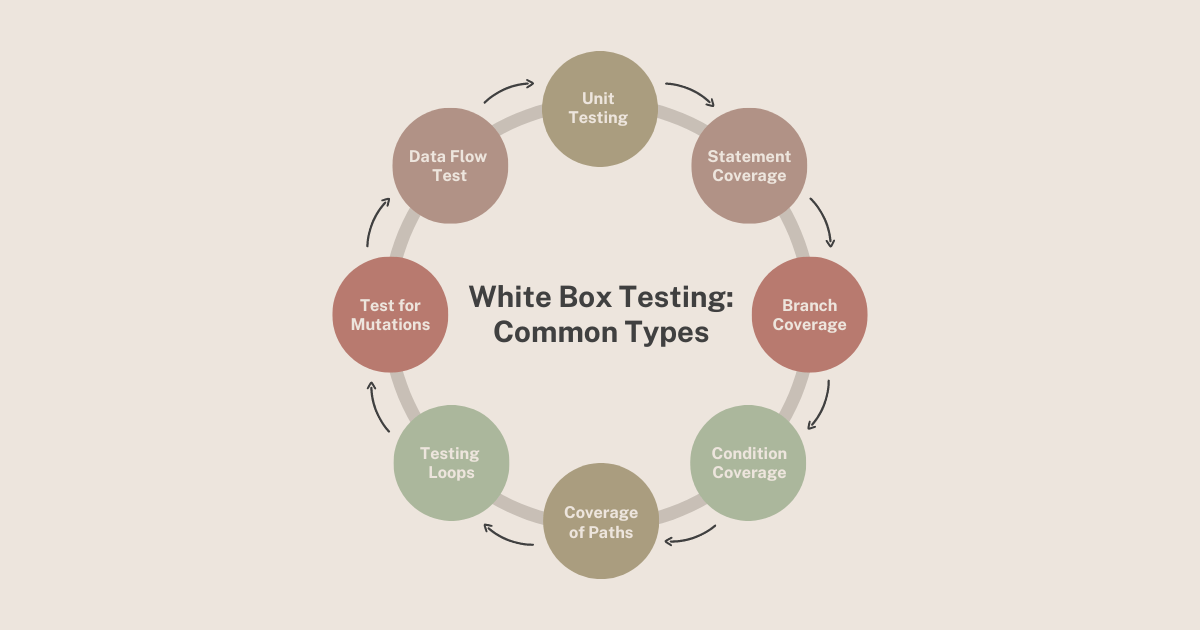Software testing is an important stage in the lifecycle of a development project. It ensures that a program works as intended. White-box testing (also known as clear box testing) examines the internal logic and structure of an application.
This blog will provide you with an overview of the various types of white box testing, as well as illustrative example.
Table of Contents
Understanding White Box Testing
White box testing is different from black-box testing which focuses only on external functionality. It requires a thorough understanding of the codebase. This knowledge is used to create test cases that are targeted at specific logic flows and code sections. This methodical approach can help identify errors such as:
- Code implementation incorrect
- Programs with logic flaws
- Inefficient algorithms
- Security vulnerabilities
White box testing is a technique that allows developers and testers to achieve high levels of code coverage. This ensures all code paths, if they are not all exercised, will be tested.
White Box Testing: Common Types

This article will provide you with a list of the most common white box testing methods, as well as examples to help you understand them:
Unit Testing:
Unit testing is the foundation of white-box testing. It involves isolating and testing individual code units (functions, Modules) by creating test cases.
For example: Imagine a function which calculates the area in a rectangle. In a unit test, you would use different widths and heights as inputs and check if the output matches what was expected.
Statement coverage:
The goal of this technique is to run every line of code once or more during testing. The testers carefully design test cases in order to make sure that all statements are covered.
For example: Imagine that you have a code fragment which calculates shipping charges based on the order weight and distance. Tests with different weight and distance values would be required to ensure that all conditional statements and calculations (if-else’s) are carried out.
Branch coverage:
Building on statement coverage, branch cover focuses ensuring that every possible branch (if statements) within a decision-point is exercised. This is done by testing various conditions (true/false), to ensure that each code path has been executed.
For example: The same scenario of calculating shipping costs would require branch coverage tests that include weight and distance values, which trigger true and false conditions within the if statements. This ensures the code is able to handle all possible scenarios.
Condition coverage:
This technique digs deeper into the individual conditions within decision-points. It is important to test each condition independently, using different input values, to check their behavior.
Example In the example of the shipping costs, the condition coverage would be testing the weight condition with different weights (above or below 10 kg), to ensure the code behaves in the expected manner for each scenario.
Coverage of Paths:
This method aims to cover all combinations of paths possible within a given program. Although it may seem exhaustive, programs with complex control flows can make this approach quite difficult.
Example Imagine that a program has nested if statement, which results in multiple code paths. To ensure that all functionality is tested, tests would need to be run on every possible combination of paths.
Ready to enhance your software quality and accelerate your time to market? Contact us today at sales@stelotechnology.com to request a customized quote for your business!
Testing Loops:
Loops are fundamental programming constructs that are used to perform repetitive tasks. Loop testing is used to verify loop functionality including initialization, evaluation of conditions, and termination.
For Example: Consider looping through a customer order list. Loop testing will include scenarios with empty list, single item lists, and large list to ensure that the loop initializes properly, iterates each element, then terminates once the list has been exhausted.
Test for Mutations:
This test involves intentionally introducing errors (mutations) to the code, and testing whether the test suite is able to detect them. If the mutations are not detected, this indicates that the test suite needs to be improved.
For example: To simulate a bug, a mutation test could change the comparison operator (e.g. > to ). If the test suite does not detect the change, then the tests should be improved to detect such errors.
Data Flow Test:
The technique analyses how data flows throughout the program. It focuses on areas where data manipulation could lead to errors. The testers design test cases to target specific data pathways in order to ensure proper handling of data.
For example: Imagine that a program calculates discounts for users based on the history of their purchases. Data flow testing involves scenarios that include different purchase history data in order to test whether calculations are correctly performed on various data values.
Selecting the right White Box Testing Techniques
- Project Complexity: Statement and branch coverage may suffice for simpler projects. For more complex projects, condition coverage or path coverage may be beneficial.
- Resources available: Techniques such as mutation testing require additional resources to execute and design tests.
- Risk Assessment: Functionalities that are more critical may require more thorough testing, such as path coverage. Less-critical areas can be covered by simpler techniques.
White Box Testing: Benefits
You can gain several benefits by incorporating white-box testing into your software lifecycle:
- Early defect identification: The white box test allows you to detect bugs early in development, saving time and money on fixing them.
- Better code quality. White box testing ensures that your code is efficient and well-written.
- Improved security: The white box testing method can be used to identify potential security flaws in the code and make your software more resistant to attacks.
- Code coverage increased: By using various white-box testing techniques, it is possible to achieve a high level of code coverage. This will increase your confidence in the overall quality of software.
Conclusion
The white box test is a very powerful tool for software testing. Understanding the different types of white box testing and their applications will help you design test cases that are effective and ensure quality, efficiency and security for your software. You can produce high-quality software by strategically selecting and integrating the right techniques into your development process.


